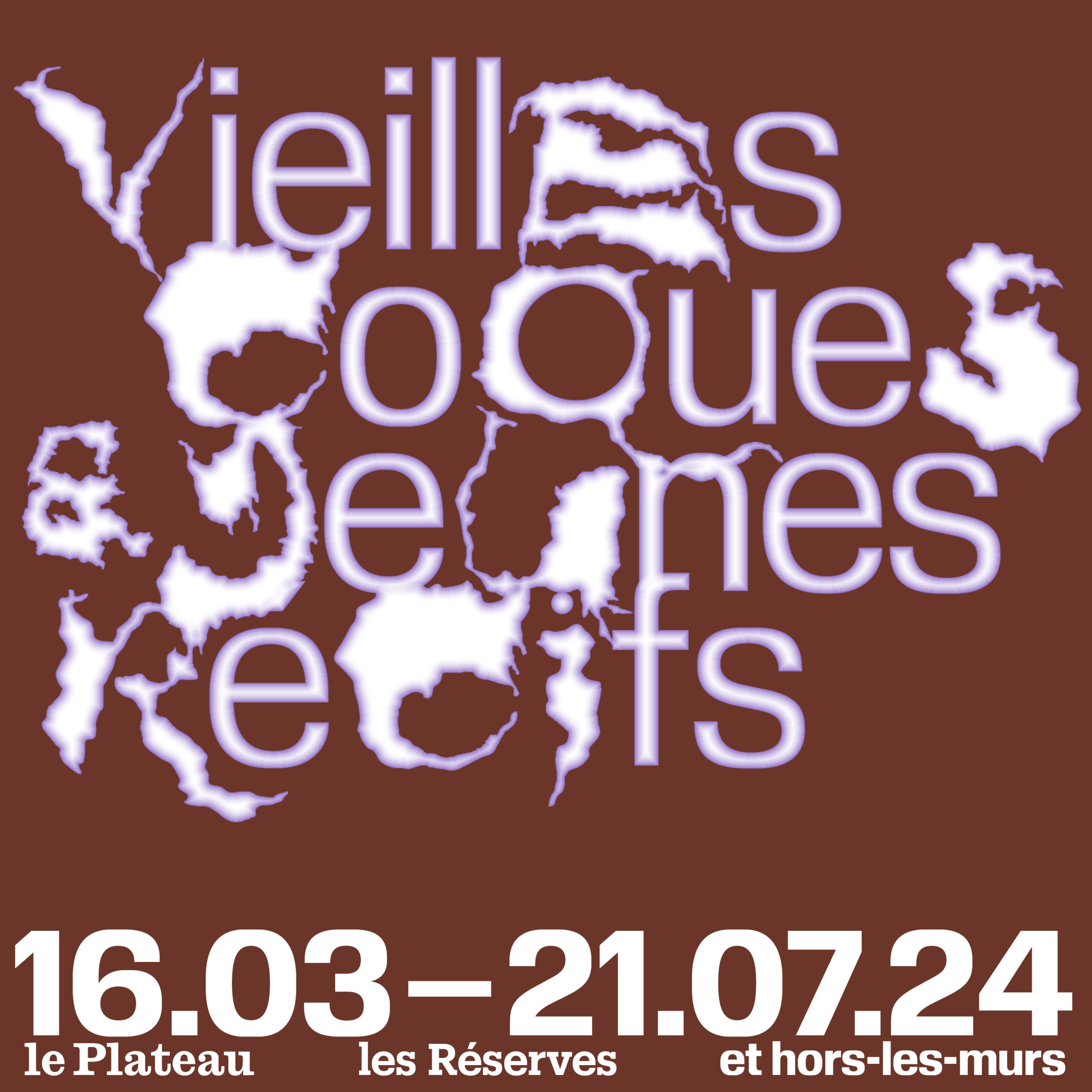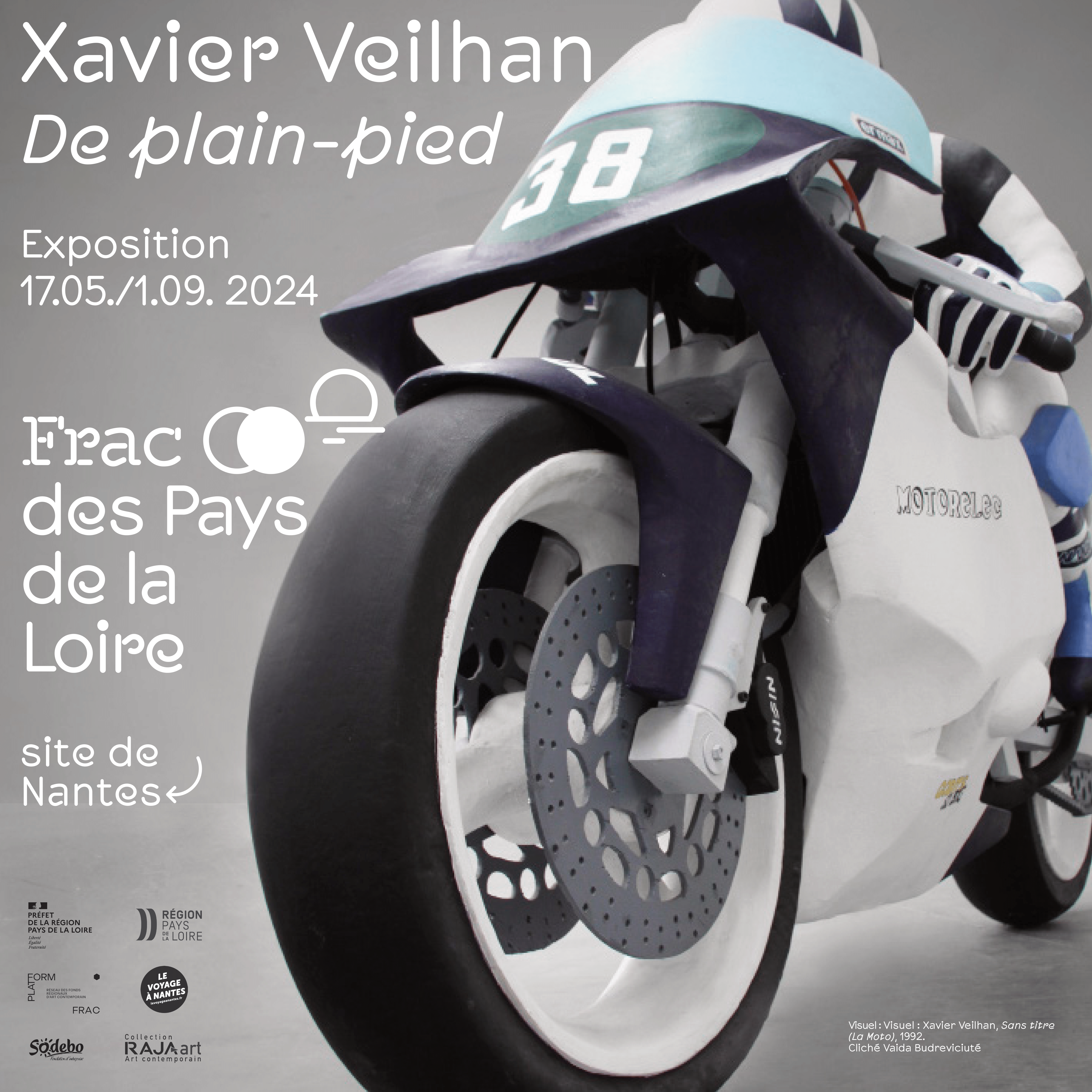Yoan Sorin
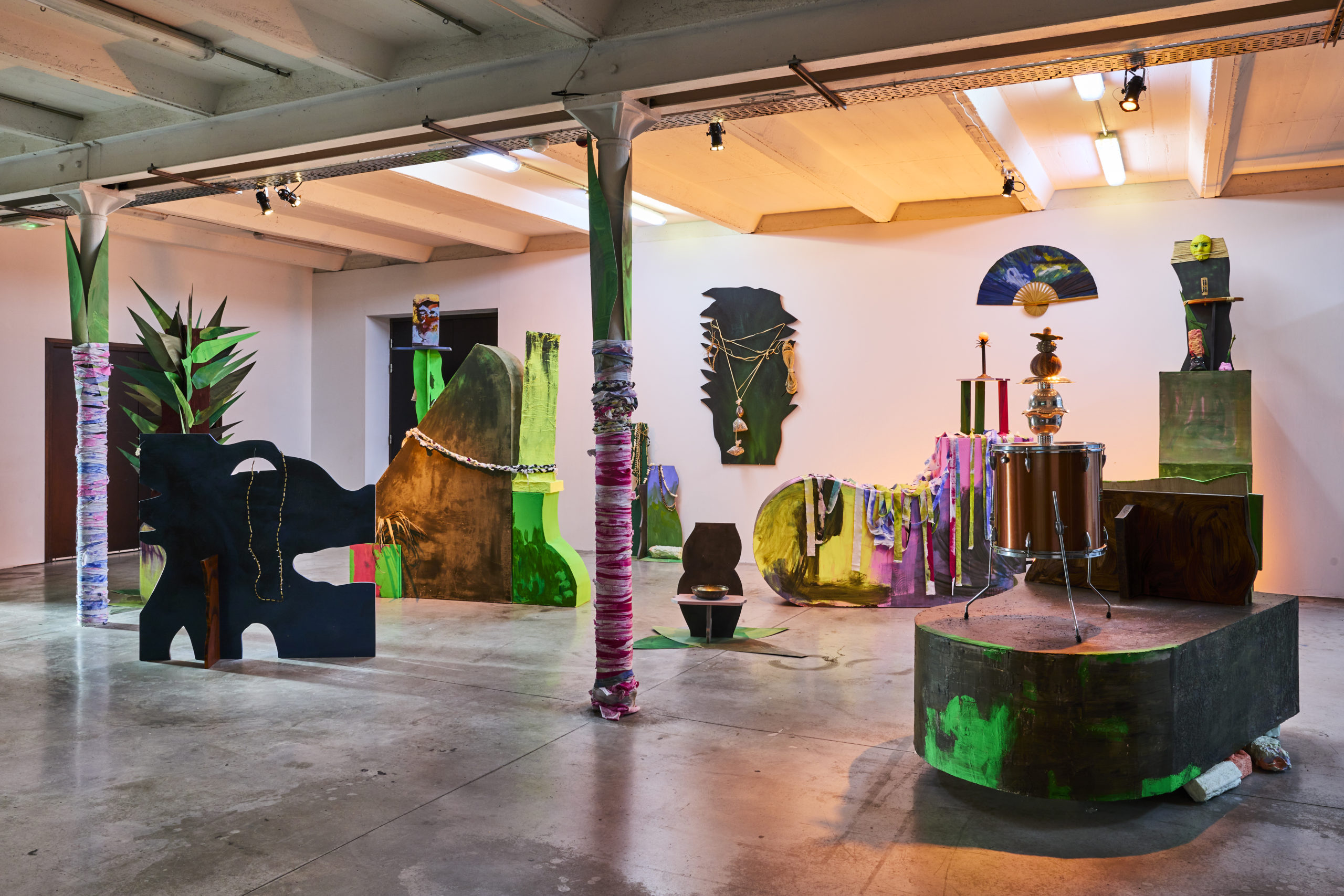
Between disorder and poetry: the creative materialism of Yoan Sorin
Yoan Sorin, like Kafka who wrote that everyone ‘carries a room inside them’, is a nomadic artist. Where some people see the studio as a ‘reassuring piazza’, he makes itinerancy the core of his approach, transforming instability into a genuine creative force. This summer, his prolific schedule, marked by his participation in three exhibitions, offers us a privileged point of entry for exploring, however briefly, the breadth of his artistic field.
His mobility is more than just a biographical anecdote; it’s a defensive posture, a political response to the precariousness to which contemporary artists are subjected. For Yoan Sorin, creation emerges from the moment, urgently and without premeditation, and every blank space – the white cube first and foremost – becomes a playground where the creative act is fully embodied. His approach to installation here takes on a literal dimension: he settles into the space, making it his own, to open it up to newness, to the emergence of the unprecedented.
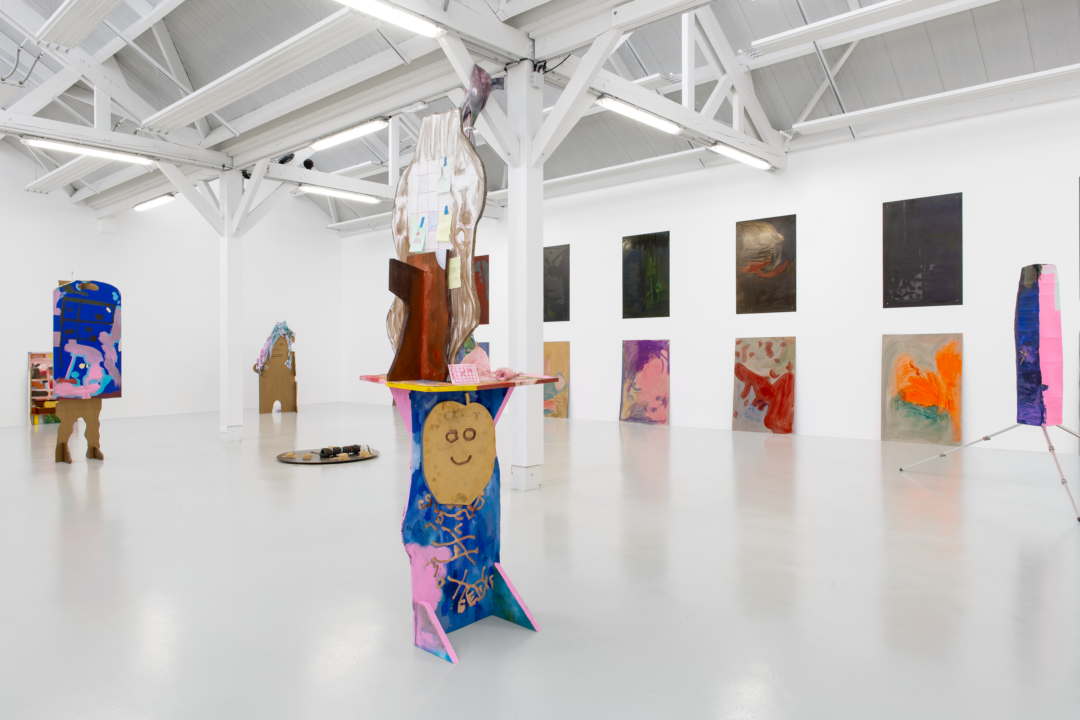
The unstable, fluid temporality that permeates his work finds a particular echo in the ‘Chronique de l’oubli’ exhibition, presented this summer at the 40mcube art centre in Rennes. In it, the artist approaches time and memory as flexible materials that can be modulated at will, and which he manipulates with great irony. The exhibition space unfolds as an installation in which the different facets of his universe come together: paintings, sculptures, but also salvaged objects, creating a journey in which the visitor’s experience becomes central. With a playful sense of misuse, Sorin reinvents the tools used to measure time: watch dials are obscured, clocks are out of sync, and calendars become incomprehensible. Everything seems to escape the reassuring linearity of time. At the heart of this temporal drift, the artist introduces incongruous objects – masks or plastic toys – that subtly disrupt the order of things. By seizing on worn-out materials and relics, he gives them a new life, a new meaning. These intrusions, activated during an inaugural performance, plunge visitors into a jarring, almost dissonant temporality.
Recurrence, rhythm and repetition are at the heart of this dynamic, with each work evolving over time. Some of the reversible paintings are turned over every week by the centre’s staff, breaking with the idea of a static display. For Yoan Sorin, an exhibition is never an end in itself, but rather a stage in a process. The dialogue between time and material is also literal: the Corten steel pieces, left to corrode, become witnesses to natural wear and tear, accentuated by the use of rustproofing to freeze the passage of time. The exhibition takes the form of a moving ecosystem, reinforced by a haunting sound envelope made up of the clicking of tongues, creating an imposed rhythm that is constantly disrupted by random noises produced involuntarily by the mouth. Born of the tension between human control and the unexpected, this ‘third rhythm’ is perhaps the best embodiment of the strength of this work.
This ‘controlled accident’, the driving force behind his work, permeates each of his interventions, making improvisation not a mark of lightness, but a veritable working philosophy. His creations are snapshots, always in motion, evolving, transforming, even degrading, refusing any form of stability. Yoan Sorin meticulously examines what ‘our hands know’, reflecting on how the creative gesture becomes a direct echo of thought and affect. His artistic approach is resolutely materialist, focusing on the physical capacities and limits of the materials with which he composes. For him, creation is rooted in contingency, the need to ‘make do’ with what the environment offers.
It is precisely at this stage of the creative process that another thread running through his practice comes into play: his personal history. Coming from a working-class background, Yoan Sorin often speaks of the sense of injustice he carries within him. His art becomes a way of reasserting a place in a space – that of contemporary art – for which he was not initially destined.
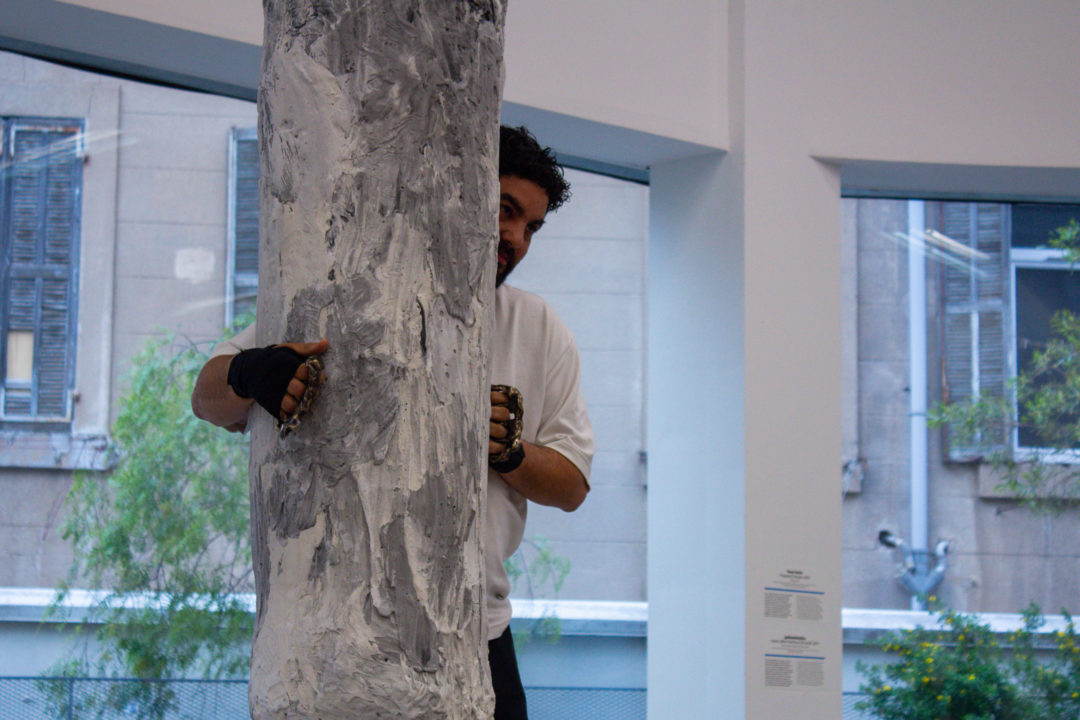
Born in Cholet in the 1980s, Yoan Sorin has been deeply influenced by this medium-sized town, marked by its limits and precarious realities. His youth was dominated by basketball, a sport he played at young hopeful level and which represented a royal road to the professional level. However, health problems put an end to his sporting ambitions. This painful transition coincided with his discovery of the world of art, marking a decisive turning point in his life. Sport has left an indelible mark on his body and his work. So it was only natural that the artist should take part in the major group exhibition ‘Des exploits, des chefs-d’œuvre’, organised by art critic Jean-Marc Huitorel and presented in the city of Marseille’s three leading cultural institutions.
At the Mucem, he exhibited intriguing pieces such as Ballons pelés – used basketballs that he transforms, removing their sporting function and turning them into objects of aesthetic contemplation. These pieces are an homage to sporting relics, where used balls are transformed into more vegetal elements, underlining his ongoing research into the art of recycling and metamorphosis. Another of his collections combines palm-shaped candleholders with basketballs, creating what he calls Palmiers de basket (Basketball Palms) (2013-2023). These fragments of life are not mere ornaments, but receptacles for memories and emotions, human traces recomposed in his installations.
The rhythm, exhaustion and repetition of sporting gestures materialise with palpable intensity in Yoan Sorin’s performances. During the opening of his exhibition at Frac Sud, the artist orchestrated a striking scene: armed with brass knuckles, he attacked a suspended volume resembling a punching bag. His gesture, violent and precise, aims to tear away the layers of the bag to reveal a range of hidden materials and objects. This work, entitled Frapper/Creuser (2016), is a vibrant tribute to his maternal grandfather, François Pavilla, the first West Indian boxer to become French champion. Through this performance, Sorin explores physical and mental limits, staging repetitive gestures that test the viewer’s patience. This process, an incessant search for the tipping point where balance wavers, embodies a profound reflection on the body as a terrain of struggle and transcendence. Initially presented as part of an exhibition at the HEC business school in Paris (2017), the intrinsic violence of this performance echoes the capacity of sport – like art – to transcend spaces often reserved for an elite.
This eminently political reflection, rooted in the class struggles that punctuate Yoan Sorin’s personal history, opens up a space for questioning his belonging to the Martinican diaspora, even though he has never lived there. It is part of the touring exhibition Des grains de poussière sur la mer. Contemporary Sculpture from the French Caribbean and Haiti, curated by Arden Sherman.
For the Marseille’s leg, Yoan Sorin is unveiling his installation Pièces détachées (2024), a work combining plasterboard, papier-mâché, wood and cardboard, ordinary materials worked with acrylic binder, pigments, dust accumulated during assembly and shell powder. These fragments, far from being insignificant, carry with them a story, an emotional and affective charge, which Sorin integrates as essential parts of his artistic narrative. The installation as a whole conjures up images of pianos, preserved at the Marseille Conservatoire, originally destined to be sent to the former French colonies. But under the artist’s hand, the instrument takes on another dimension. Turned upside down, the piano becomes a kind of funerary monument, evoking both the memory of the famous Martinique pianist Marius Cultier (1943-1985) and a more ambiguous tribute to colonial history. By transforming this object into a relic, Yoan Sorin questions the erasure of memory, transmission and belonging in a diasporic world. This reversal of the piano illustrates exile and nostalgia, a double belonging that places the individual in a constant gap with the rest of the surrounding world. He finds himself permanently at odds, unable to fully embrace social structures.
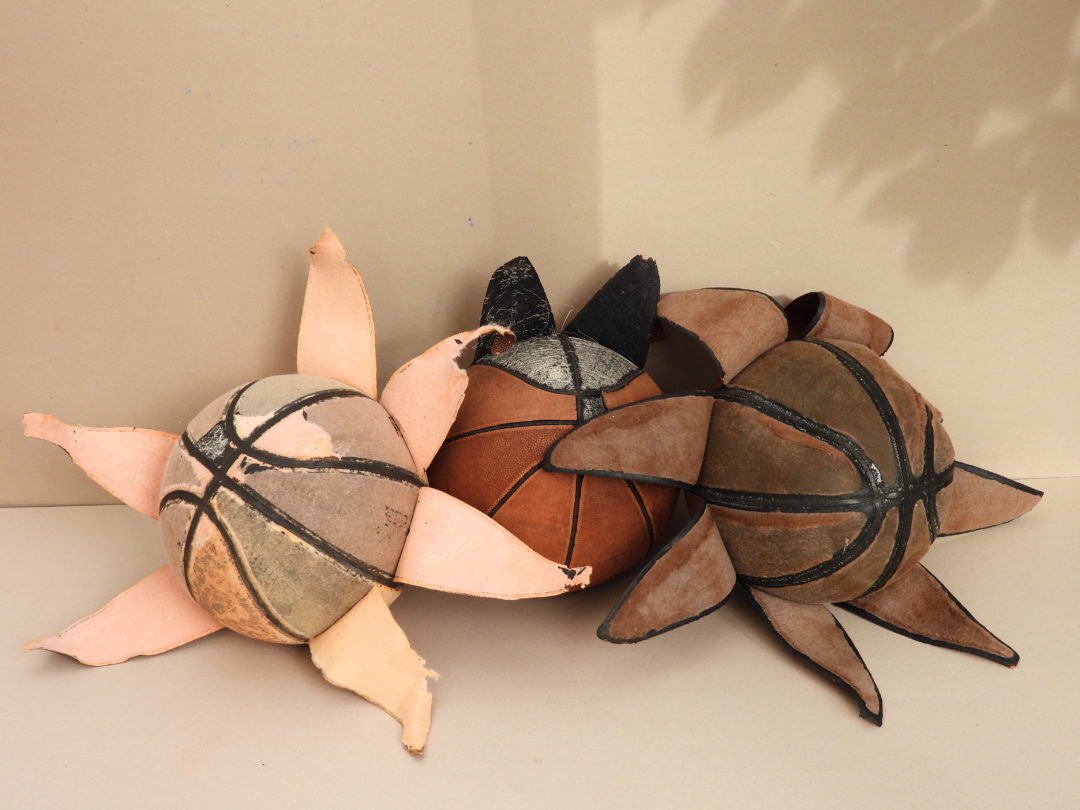
Head image : Yoan Sorin, Pièces détachées, 2024. Installation pour l’exposition « Des grains de poussières sur la mer » Fraeme, La Friche Belle de Mai, Marseille. Photo : JC LETT.
Related articles
Gregory Sholette
by Ingrid Luquet-Gad
Vera Kox
by Mya Finbow
Fabrice Hyber
by Philippe Szechter
